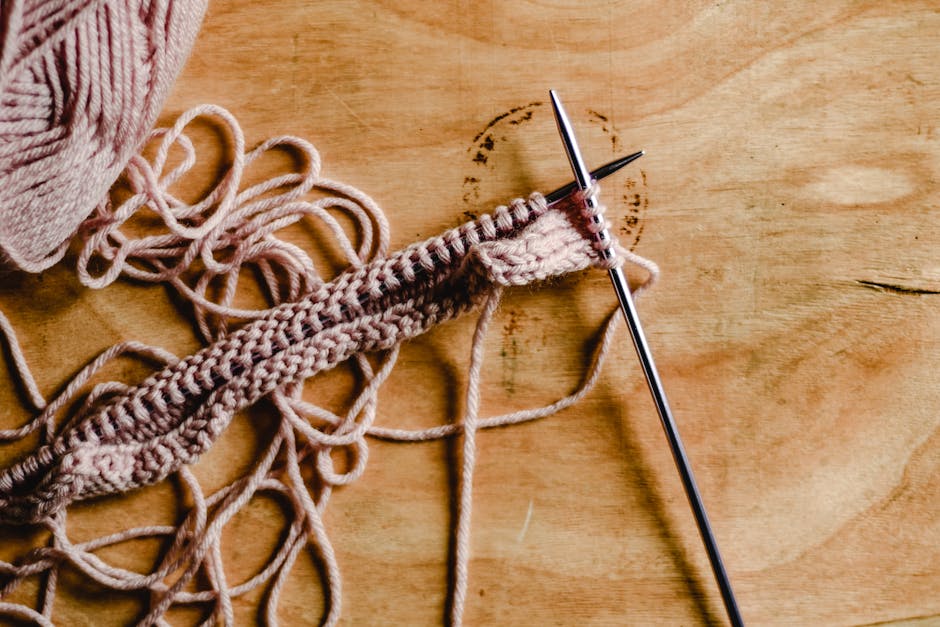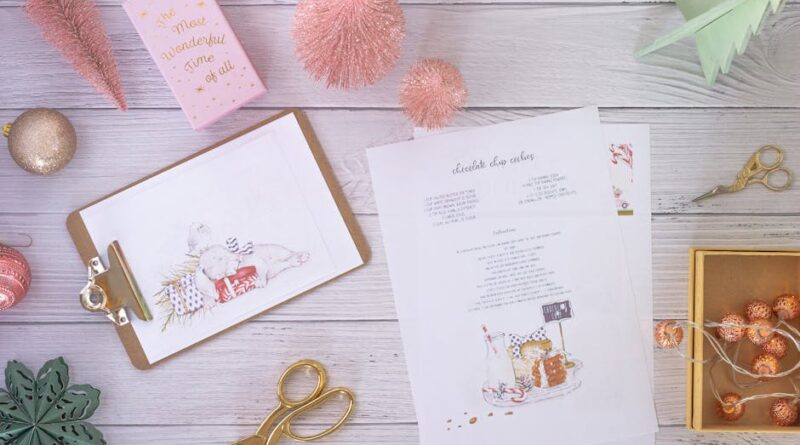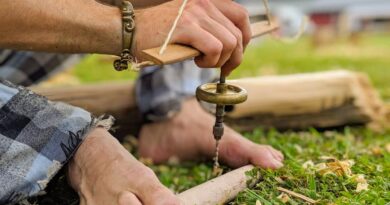How to Start a DIY Crafting Blog
Welcome to the exciting world of DIY crafting blogs! If you have a passion for crafting and want to share your creations with the world, starting a crafting blog can be a rewarding and fulfilling endeavor. Whether you’re a beginner looking to dip your toes into the crafting community or a seasoned crafter ready to take your hobby to the next level, a DIY crafting blog is a fantastic platform to showcase your projects, connect with like-minded individuals, and even potentially turn your hobby into a successful business.
In this comprehensive guide, we’ll walk you through the essential steps to start your own DIY crafting blog. From choosing a niche and setting up your blog to creating engaging content and growing your audience, we’ll cover everything you need to know to kickstart your crafting blogging journey. So, grab your favorite crafting supplies, get cozy, and let’s dive into the world of DIY crafting blogs!
Choosing Your Niche

Before you dive headfirst into creating your DIY crafting blog, it’s essential to define your niche. What types of crafts are you passionate about? Do you specialize in knitting, scrapbooking, woodworking, or perhaps upcycling old furniture? Identifying your niche will not only help you focus your content but also attract a specific audience that shares your interests.
When choosing your niche, consider your expertise, interests, and the market demand. Are you knowledgeable about a particular crafting technique or trend? Is there a gap in the crafting blogosphere that you can fill with your unique perspective? Conducting market research and analyzing popular crafting blogs can provide valuable insights into what topics are trending and what resonates with audiences.
Remember, your niche doesn’t have to be overly narrow. You can always start with a broader focus, such as general DIY crafts, and then narrow it down as you establish your blog and audience. The key is to find a balance between your passion and what your target audience is seeking.
Setting Up Your Blog

Once you’ve identified your niche, it’s time to set up your DIY crafting blog. The good news is that starting a blog has never been easier, thanks to user-friendly platforms like WordPress, Blogger, and Wix. These platforms offer customizable templates, easy-to-use tools, and hosting services that make the process seamless, even for beginners.
Here are the key steps to setting up your crafting blog:
Choose a Domain Name
Your domain name is your blog’s address on the internet, so it’s essential to choose a name that reflects your brand and is easy to remember. Ideally, your domain name should include keywords related to crafting to improve your blog’s search engine optimization (SEO).
Select a Hosting Provider
Hosting is the service that stores your blog’s data and makes it accessible to users online. There are many hosting providers to choose from, so compare prices, features, and customer reviews to find the best option for your needs.
Install a Blogging Platform
WordPress is one of the most popular blogging platforms, known for its user-friendly interface and extensive customization options. Once you’ve selected your hosting provider, you can install WordPress with a few clicks and start building your blog.
Customize Your Blog Design
Choose a visually appealing theme that aligns with your crafting niche and brand identity. Customize your blog’s colors, fonts, and layout to create a cohesive and inviting design that reflects your creative style.
Create Essential Pages
Every crafting blog should have essential pages like an About Me page, Contact page, and Categories page to help users navigate your content and learn more about you. These pages also establish credibility and trust with your audience.
Set Up Social Media Accounts
Social media is a powerful tool for promoting your blog, connecting with followers, and driving traffic to your site. Create accounts on platforms like Instagram, Pinterest, and Facebook to share your crafts, engage with your audience, and grow your online presence.
Creating Engaging Content

Now that your DIY crafting blog is up and running, it’s time to start creating content that will captivate your audience and keep them coming back for more. High-quality, engaging content is the cornerstone of a successful blog, so invest time and effort in brainstorming ideas, planning your posts, and crafting compelling stories that resonate with your readers.
Develop a Content Strategy
A content strategy outlines the type of content you’ll create, how often you’ll post, and the goals you want to achieve with your blog. Consider creating a content calendar to schedule your posts, plan upcoming projects, and stay organized with your blogging efforts.
Write Compelling Blog Posts
When writing blog posts, focus on providing valuable information, inspiration, and entertainment to your audience. Use a conversational tone, share personal anecdotes, and be authentic in your writing to connect with readers on a deeper level. Don’t forget to optimize your posts for SEO by including relevant keywords, meta tags, and alt text for images.
Showcase Your Crafts
Visual content is essential for a crafting blog, so make sure to showcase your crafts through high-quality photos, videos, and tutorials. Create step-by-step guides, how-to videos, and before-and-after transformations to provide valuable insights into your creative process and inspire your audience to try out your projects.
Engage with Your Audience
Building a community around your blog is key to fostering engagement and loyalty among your readers. Respond to comments, ask for feedback, and encourage dialogue to create a sense of connection and belonging. Host giveaways, contests, and challenges to incentivize interaction and reward your followers for their support.
Monetizing Your Blog

While blogging is a passion project for many crafters, there are also opportunities to monetize your blog and turn your hobby into a source of income. From affiliate marketing and sponsored content to selling handmade products and digital downloads, there are various ways to generate revenue from your crafting blog.
Affiliate Marketing
Affiliate marketing involves promoting products or services from other companies and earning a commission for each sale or referral. Join affiliate programs related to crafting supplies, tools, and materials, and incorporate affiliate links into your blog posts to earn passive income from your recommendations.
Sponsored Content
Collaborating with brands on sponsored content can be a lucrative way to monetize your blog. Partner with crafting companies, art supply stores, or DIY brands to create sponsored posts, product reviews, or sponsored tutorials that align with your audience’s interests and your blog’s niche.
Sell Handmade Products
If you’re a skilled crafter, consider selling your handmade products through your blog. Set up an online shop, showcase your creations, and promote your products to your audience. You can sell physical goods like handmade jewelry, home decor items, or custom artwork, or offer digital products like printable templates, patterns, or e-books.
Offer Online Workshops
Share your crafting expertise with your audience by offering online workshops, courses, or virtual classes. Teach crafting techniques, share tips and tricks, and provide hands-on instruction to help your followers improve their skills and unleash their creativity. Hosting paid workshops can be a lucrative revenue stream for your blog.
Growing Your Audience
As you continue to create valuable content and engage with your audience, focus on growing your blog’s reach and attracting new followers. Building a loyal and dedicated audience takes time and effort, but with consistency, authenticity, and strategic promotion, you can expand your blog’s influence and connect with a broader community of crafters.
Optimize for SEO
Search engine optimization (SEO) is essential for increasing your blog’s visibility and attracting organic traffic from search engines. Use relevant keywords, optimize your meta tags, and create high-quality, shareable content that resonates with your target audience. Regularly update your blog with fresh content to improve your search rankings and attract more visitors.
Collaborate with Other Bloggers
Networking with other crafting bloggers can help you expand your reach, build relationships, and tap into new audiences. Collaborate on guest posts, participate in blog hops or link parties, and cross-promote each other’s content to introduce your blog to a wider community of craft enthusiasts.
Promote Your Blog on Social Media
Social media is a powerful tool for promoting your blog, driving traffic, and engaging with your audience. Share your blog posts, behind-the-scenes content, and sneak peeks of upcoming projects on platforms like Instagram, Pinterest, and Facebook. Use hashtags, tagging, and collaborations to increase your visibility and connect with new followers.
Analyze Your Blog Analytics
Monitoring your blog’s performance through analytics can provide valuable insights into your audience, content engagement, and traffic sources. Track key metrics like page views, bounce rate, and conversion rate to understand what’s working well and where you can make improvements. Use this data to optimize your content strategy, refine your marketing efforts, and grow your blog strategically.
Common Misconceptions
Starting a DIY crafting blog may seem daunting at first, but with the right mindset and preparation, you can overcome common misconceptions and launch a successful blog. Here are a few myths debunked:
Myth: Blogging is too time-consuming.
While blogging requires time and effort, you can streamline your workflow, batch content creation, and schedule posts in advance to maintain consistency without feeling overwhelmed.
Myth: You need to be a professional crafter.
You don’t have to be an expert crafter to start a crafting blog. Share your journey, learn along the way, and embrace imperfections as part of your creative process. Authenticity and passion matter more than perfection.
Myth: Monetizing your blog is unrealistic.
While monetizing a blog takes time and dedication, there are multiple avenues to generate income, from affiliate marketing to selling products and services. Stay patient, focus on building your audience, and opportunities will come.
Conclusion
Starting a DIY crafting blog is a creative and rewarding endeavor that allows you to share your passion, connect with like-minded individuals, and inspire others to unleash their creativity. By choosing your niche, setting up your blog, creating engaging content, and growing your audience, you can build a successful crafting blog that reflects your unique style and resonates with readers around the world.
Whether you’re a novice crafter exploring new techniques or a seasoned artist looking to expand your reach, a crafting blog offers a platform to showcase your talents, share your knowledge, and build a supportive community of fellow craft enthusiasts. So, grab your crafting supplies, fire up your imagination, and start crafting your blogging journey today!




